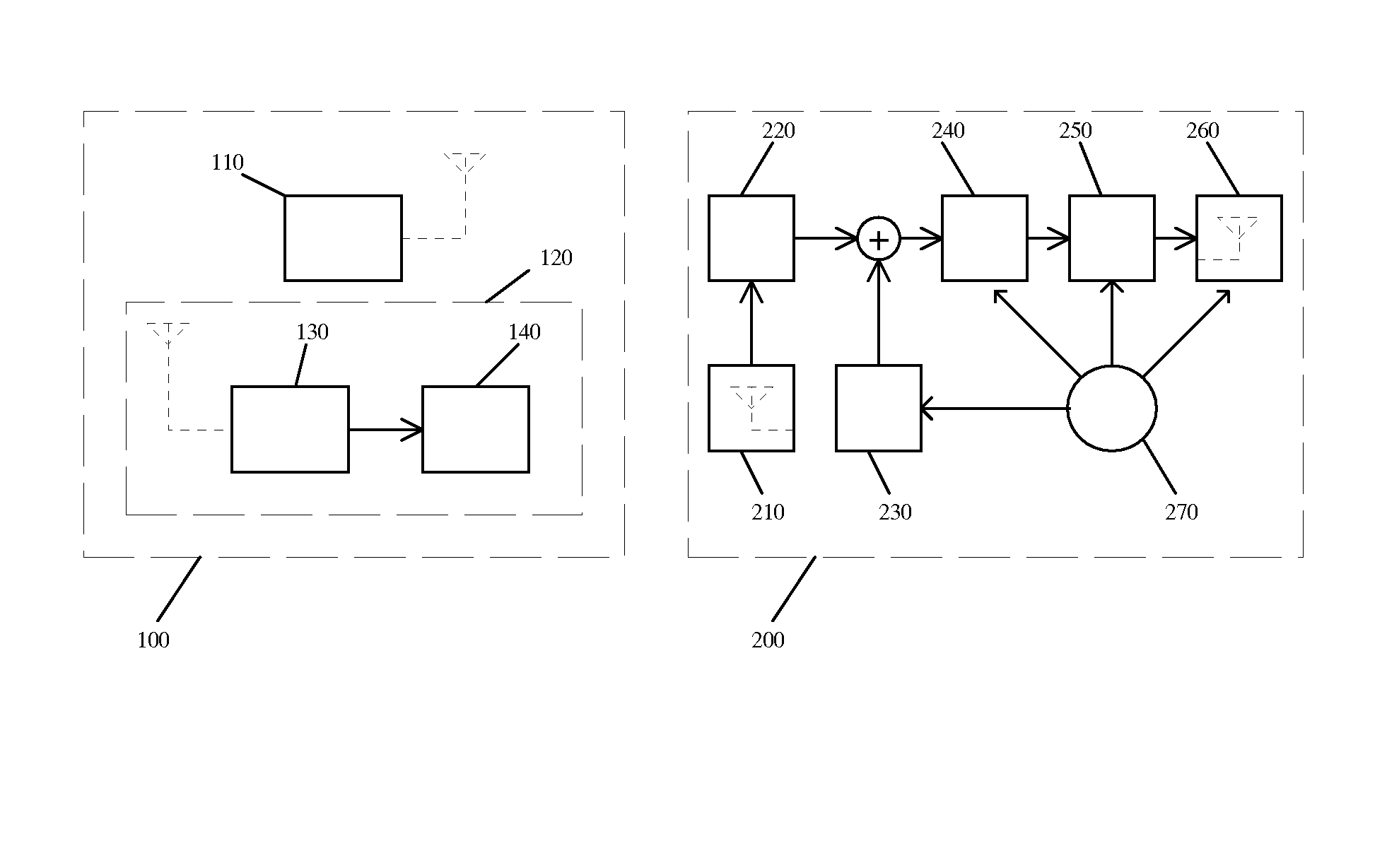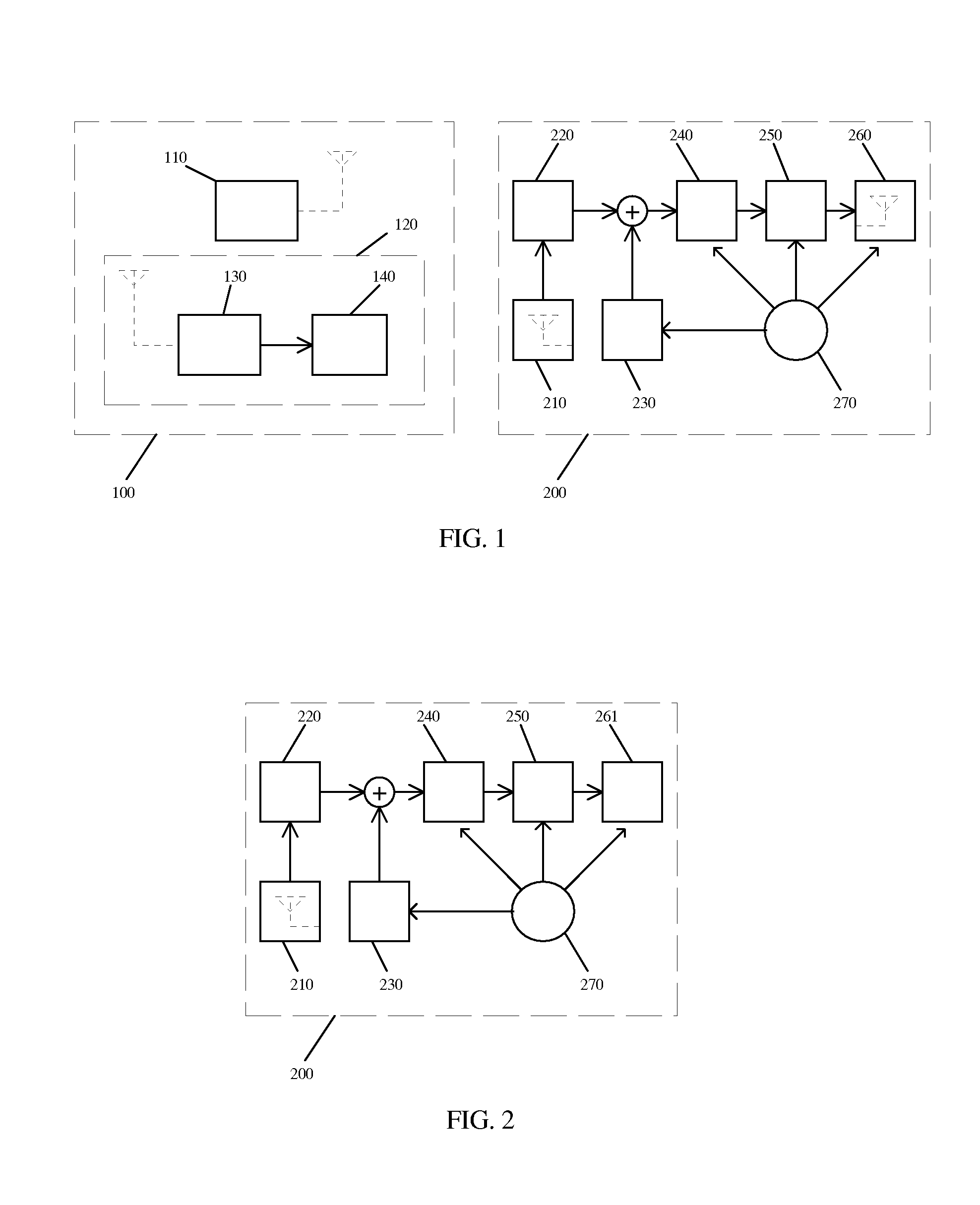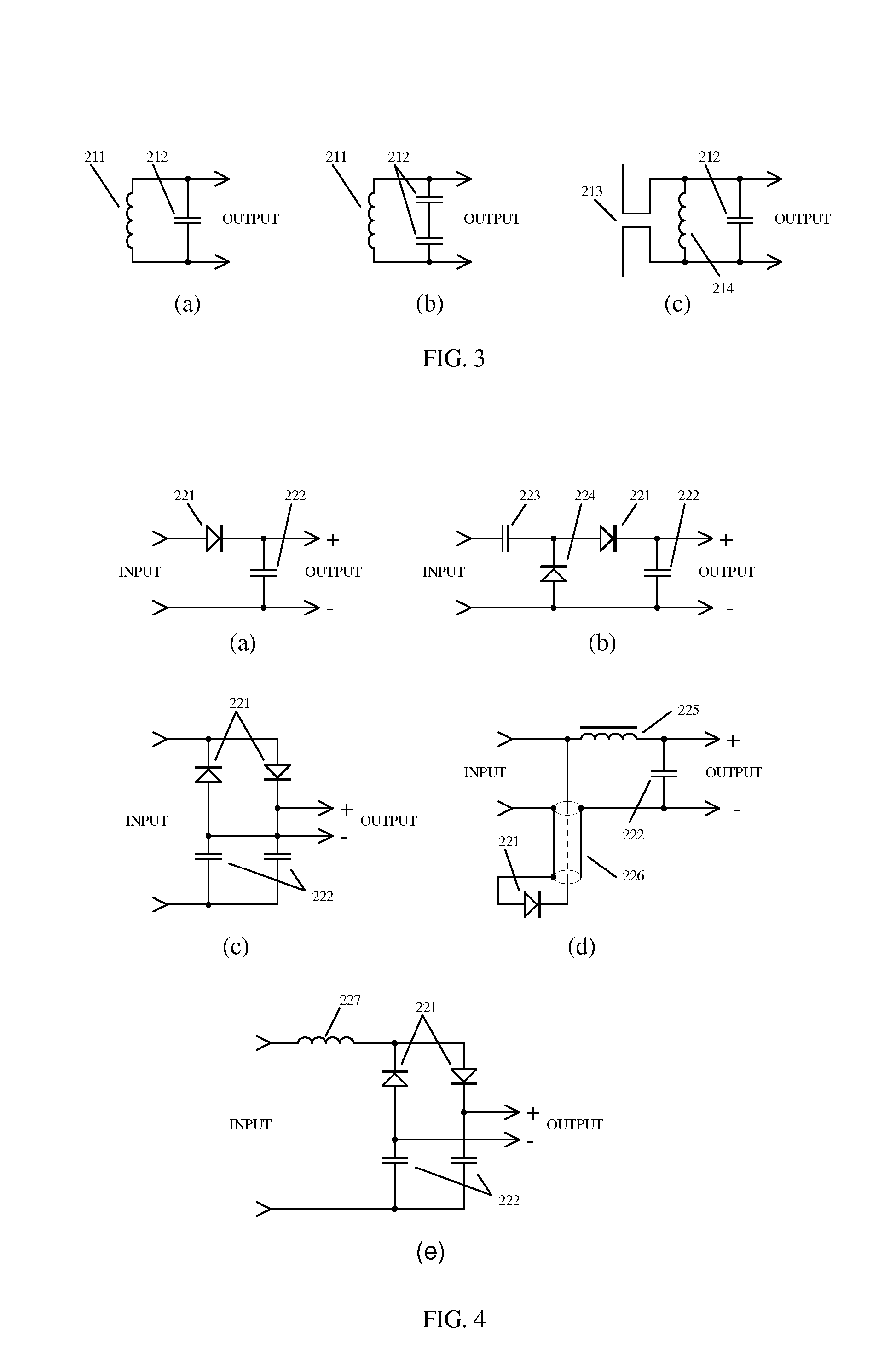RF-activated tag and locator
a locator and activation tag technology, applied in direction finders, instruments, signalling systems, etc., can solve the problems of extremely long battery life and no rf activation tag device produced, and achieve the effects of reducing false triggering, low quiescent power consumption, and reducing false triggering
- Summary
- Abstract
- Description
- Claims
- Application Information
AI Technical Summary
Benefits of technology
Problems solved by technology
Method used
Image
Examples
Embodiment Construction
[0028] A self-contained tag device could be sealed from the environment by an enclosure, a protective coating such as an epoxy dip, or other protective means, and would generally employ a power source. A tag device that is incorporated within or integrated into another object may use the power source of the object, if available, and the object's enclosure would provide protection for the tag circuitry.
[0029]FIG. 1 shows one embodiment of a locator device (100) and a tag (200), where the tag (200) provides an RF response. The tag device (200) provides a tuned antenna (210) designed to resonate at a frequency generated by the transmitter (110) of the locator device (100). The signal transmitted by the locator's transmitter (110) would ideally be in an unlicensed frequency band such as 315 MHz, 433 MHz, 462 MHz, or 902-918 MHz. The tuned antenna (210) is coupled to a detector circuit (220) to provide an output signal. The detector's output is optionally summed with the output of an op...
PUM
 Login to View More
Login to View More Abstract
Description
Claims
Application Information
 Login to View More
Login to View More - R&D
- Intellectual Property
- Life Sciences
- Materials
- Tech Scout
- Unparalleled Data Quality
- Higher Quality Content
- 60% Fewer Hallucinations
Browse by: Latest US Patents, China's latest patents, Technical Efficacy Thesaurus, Application Domain, Technology Topic, Popular Technical Reports.
© 2025 PatSnap. All rights reserved.Legal|Privacy policy|Modern Slavery Act Transparency Statement|Sitemap|About US| Contact US: help@patsnap.com



